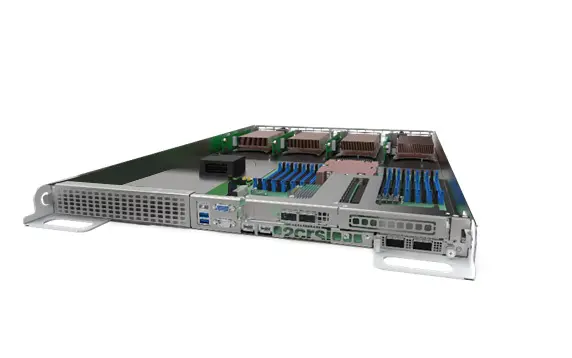SINGLE PHASE IMMERSION COOLING SYSTEM
Immersion cooling has been proven to be the best solution for industries needing to cool high-computing servers emitting a lot of waste heat. Two different system exists: single-phase cooling system and two-phase immersion cooling system.
Today, we are focusing on single-phase liquid.
Single-Phase Liquid Immersion Cooling, How Does It Work?
The principle of immersion cooling is immerging servers in a tank filled with a dielectric liquid.
The latter differs according to the type of system we’re using. In single-phase immersion, two types of liquid can be used. The hydrocarbon-based dielectric liquid, which is like mineral oil, and synthetic oil. Contrary to two-phase liquid, which is fluorocarbon-based liquid, the coolant in single-phase doesn’t boil, therefore doesn’t undergo a phase change during the cooling process.
The waste heat is transferred from the components to the coolant. The latter is pumped to a heat exchanger where the heat is directly transferred to a cooler water circuit and send back into the immersion tank.
Since the dielectric coolant is a better heat conductor than air, this kind of liquid cooling is well suited for high-density racks and is less expensive than two-phase immersion cooling.

Why Should You Use Single Phase Immersion Cooling?
The benefits of single-phase immersion cooling are numerous.
This system is much more efficient than air-cooled systems, as it eliminates the need for fans. This reduces energy consumption and lowers operational costs. Additionally, the fluid acts as a fire suppressant, reducing the risk of fire in the data center.
Single phase immersion cooling is much more environmentally friendly than traditional air-cooled systems. The fluid used is non-toxic and non-flammable, making it safe for use in data centers
To summarize:

Increase power rack density
The components in the server can be placed closer to each other therefore requiring less space, because the heat generated is significantly reduced with immersion cooling. This enables high-density rack designs.

Reduce energy usage
Compared to tradition air cooling system, single-phase cooling greatly reduces the data center footprint by reducing or completely removing air cooling units. It is estimated that single-phase liquid can uses 50% less energy than traditional air cooling.

Components lifespan
The lifespan of components is longer in immersion cooling thanks to the lack of temperature variations and lack of fans (which can possibly provoke vibrations).

Low maintenance
This cooling method does not require complex infrastructure, CRACs, CRAHs, or chillers making it very effective and low maintenance.

Reduce PUE
Single-phase liquid can claim a PUE of 1.03 opposed to 1.02 with two-phase immersion cooling and around 1.6 with air cooling.

Reduce TCO
Single-phase immersion cooling being a fanless system, air cooling infrastructure is reduced, greatly diminishing the total cost of ownership (TCO).
Single Phase Immersion Cooling: for Which Applications?

HPC/AI
AI applications and high-performance computing workloads both need powerful GPUs to run smoothly. Components will therefore produce a lot of waste heat, requiring a powerful cooling system such as single-phase immersion cooling, cost efficient and environmentally friendly.

Edge/Cloud
Edge and Cloud computing come with imperatives and restrictions: the need for dense and high-performance computing is crucial and must be coordinated with the space restriction coming with compute needing to be closer and closer to the source of the data.

Hyperscaler
To stay performant and up to date, hyperscalers need to be able to quickly scale up. Immersion cooling, in single- and two-phase liquid, allows a rapid scale up at any time.




